Manor house
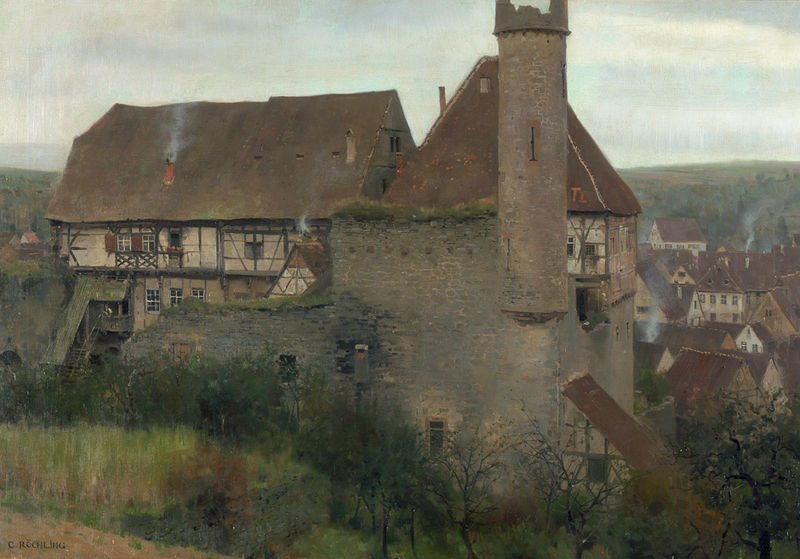
The Quintessential Aristocrat
Author Martin R. Thomas
Series Quintessential Series
Publisher Mongoose Publishing
Aristocrats, either through their birthright or through amassing wealth will at a certain point in their careers inherit or establish a manor. Similar to a fighter‘s stronghold, but designed more for ornamentation than defence, the ownership of a manor is one of the primary goals of every aristocrat.
Throughout this chapter we refer several times to the ‘lord of the manor.’ This is a generic term meant to signify the aristocrat character designing and paying for the construction of the manor including the manor house (or ‘palace’) and the surrounding grounds. The use of the word ‘lord’ in this instance should not be taken to mean that the character automatically obtains a title of nobility upon building a manor.
What is a Manor?
At its most basic level, a manor encompasses a farm economy, which may consist of a single village and its surrounding farm land all the way up to a network of small villages covering a radius of up to 20 miles, each ruled by servants of the character. At the core of the manor are two main structures: a temple dedicated to the local deity, and the manor house. To build a manor house, and in effect to control the lives of the people in the surrounding area, an aristocrat must first obtain permission from his sovereign. The sovereign will issue a special license to the character, often costing several hundred gold pieces. Without this license, stamped with the sovereign’s official seal, the manor house can be seized by the sovereign.
Manors, also called estates, are created to be self-sufficient and therefore encompass farmland, woodland, gardens, and workshops of a multitude of craftsmen. The farmland is divided by use, with some used to produce food for the lord, some for the village’s priest, some for the peasantry. Usually there are a few fields left fallow so that they do not become unusable for farming; these fields are rotated every year. In addition to the farmland, there is usually an area of un-cleared forestland, which is needed for wood for the manor.
Castles Versus Manor Houses
Castles and strongholds are primarily constructed by fighter-types to be defensive structures. All other considerations are secondary to the defensive value of the stronghold. However, while the keep of the stronghold serves as a watchtower, it is also the centre of daily life of the stronghold. fighters who build strongholds have recognized this, and usually spend a little more to make their keep more comfortable, livable and residential through the addition of certain ‘creature comforts’. In this way, the keep over time may become more and more of a status symbol.
This recognition of the keep as something other than a defensive barrier is the beginning of the aristocratic manor house, or palace. As castles and strongholds become less and less used for military purposes, they are transformed into the palaces of the aristocracy. Aristocrats are competitive, always seeking to out-shine each other by following the latest trends and fashions. A manor house is the most elaborate, ostentatious display of wealth that an aristocrat can achieve. It represents the aristocrat’s authority and lordship of its surrounding lands, but can also be constructed to serve a military, defensive function.
While not appropriate to every campaign, a manor house built primarily as a grandiose and magnificent show of wealth is important for aristocrat characters. Even elements such as mounds, moats, towers, gatehouses and elaborate crenellations, commonly associated with more defensive strongholds, are just as often created for purposes of show rather than for military reasons.
The manor house is also created to impress visitors. An expensive, refined and stylish manor house can be a very useful piece of propaganda, used as a symbol of the aristocrat’s power and authority by displaying his wealth, servants, armaments and exotic treasures.
Principles of Design
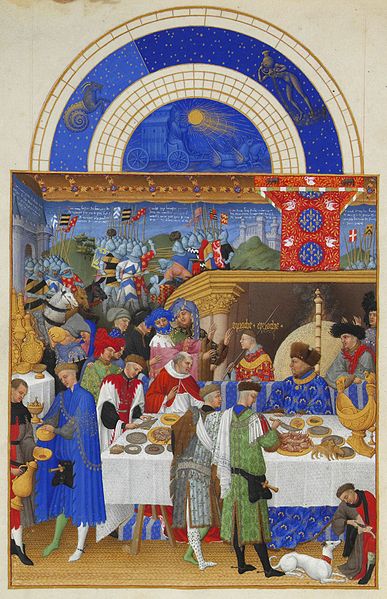
There are as many different design theories and principles of manor houses as there are aristocrats who build them. In general, however, the primary design considerations of an aristocrat can be broken down into a few main areas described below.
Homage to the Ancients. In most campaign worlds, there are long-dead civilizations that the player characters discover and explore throughout the course of their adventurers. These ancient civilizations may also be well known in the world, such as the last remnants of an elegant elven empire or the ruins of a series of dwarven mountain cities.
Some aristocrats may desire to emulate the design principals of these ancient masters, modelling their palaces on the noble structures of antiquity.
Bond With the Land. The creation of a palace and its associated estate allows an aristocrat to create a bond with the earth. Through his superior knowledge and wealth, the aristocrat and his servants are able to transform wild, unkempt land into fertile ground for agriculture and comfortable living. Aristocrats may wish to pay special heed to the impact their constructions have on the environment and may want to incorporate natural elements into their buildings. Eastern aristocrats, particularly, have a fondness for structures that blend with the natural surroundings, becoming fundamental parts of the surrounding countryside.
Impressing Your Superiors. Imitation is the sincerest form of flattery, after all. Many aristocrats may seek to curry favour with their superior lord by copying his style of manor. Others may want to appear as important as the ruling sovereign by creating palaces that bear a striking resemblance to those of the king or emperor of the land. While the structures of the lower members of the aristocracy will obviously be smaller and less grand than those of the nation’s sovereigns, they may still be created in the same style. Creating a manor house in the same style of one’s liege lord indicates that the aristocrat has the money and sense of style to ‘keep up’ with the rest of the aristocracy.
The Expression of Divine Mandate. Particularly in Eastern cultures and societies that place a great deal of emphasis on astronomical phenomena and the ‘divine right of kings’, manor houses may be constructed to take advantage of constellations and planetary orbits. Some are aligned to correlate to specific stars, planets, or other heavenly bodies so that a window in the ceiling of a throne room has a direct line of sight to a particular star or planet at a specific time of year. The lord of the manor will hold important ceremonies during these special times and will receive tribute from his administrative officials. These types of manor houses symbolize the legitimacy of the aristocrat’s rule bestowed upon him by the heaven.
The Palace as a Self-Portrait. Probably the most guiding principle in the design of a palace is the idea that the palace is, at its core, a reflection of the aristocrat who builds it and should reflect his personal choice in design. Unlike the fortresses and strongholds created by other types of characters, for the aristocrat purely aesthetic concerns are vitally important. Aristocrats delight in using the latest artistic trends and will pay handsomely for architects who can transform these desires into reality. Comfort, diversity and detail are all essential elements in the creation of an aristocrat’s palace. It should not only be functional, but express the creative personality of the aristocrat. Most palaces are very vertical, reaching toward the heavens, with the principal suite of rooms for the aristocrat given extra attention in the details such as being made taller and bigger to let in more light. The palace also gives the aristocrat a focal point for the creation of a personality cult centred upon him. For example, King Louis XIV of France had his designers at Versailles use a sun motif on all of the decorations of the palace such as on the doors and wallpaper. This helped solidify Louis’ identity as the Roi du Soleil, the Sun King.
Outside the Manor House
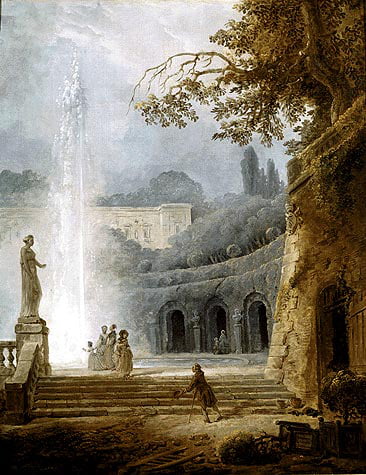
In addition to the actual manor house or palace itself are several elements that assist the aristocrat in displaying his grandeur. These design elements are located outside the palace on the grounds of the estate, where they are visible to visitors calling upon the manor house’s lord. If the land surrounding the palace is big enough, all of these elements can be included as part of the manor.
Formal Gardens. A formal garden is almost a necessity for an aristocratic palace. The gardens help to tie the structures into the overall environment of the surrounding land, and create a sense of peace and harmony with the environment. A lush display of local as well as exotic plants, flowers and trees are expensive to maintain and require the monthly services of an experienced gardener.
There are two main types of gardens found upon aristocratic estates. The first is an orderly style with a planned and measured layout made according to natural scientific theories.These types of gardens tend to be arranged in geometric patterns and follow an elaborate, almost checkerboard-like design. They are popular in both Western and Eastern cultures. The second type of garden is arranged more asymmetrically, with winding paths and randomly placed trees. These types of gardens are more popular in countryside settings. Some gardens are very formal and symmetrical close to the manor house and become more wild and carefree the further away they get from the manor house.
Manors also use gardens for growing herbs, flowers and vegetables. The manor’s chef may grow a variety of vegetables such as beets, cabbages, garlic, leeks, onions, squash and spinach.
Fountains. Another staple of aristocratic manors, large, impressive fountains are a symbol of wealth, artistic sensibilities and scientific or magical knowledge of how to re circulate the water needed to run the fountain. Designed in a variety of shapes and sizes, the most popular fountains are much like statues, representing figures such as gods of the sea and oceans or allegorical figures representing the largest bodies of water on the continent. Sea creatures, both real and imagined, are other popular themes for fountains.
Ornamental Ponds. These specially created man-made bodies of water are often found in the more country-style of gardens noted above. Sometimes filled with exotic fish or other water creatures, ornamental ponds on an aristocratic estate may also be home to fantastical creatures, such as captured nixies or even merfolk. Other ornamental ponds are empty of creatures and have surfaces as smooth as glass.
Small Vineyard. Given a large enough estate, an aristocrat may be able to grow wine grapes and produce his own vintages of wine. Different regions have different soil, which produce a wide variety of flavours and textures in the wine, so the aristocrat will want to hire the services of an expert vintner to determine if the soil and air conditions are right. Imported grapes may also be used to create specific blends of wines as well as for a display of wealth. Many church patrons are involved in wine making and many a secluded monastery has a large vineyard attached to it. Once per year during grape crushing season, the aristocrat may have his expert vintner make a Profession (Vintner) check. The result times 50 equals the amount in gold pieces that the aristocrat’s vineyards can bring in through sales of the wine.
Exotic Menagerie. This is a zoo of sorts, housing all kinds of exotic animals. The cost of an exotic menagerie can bankrupt many an aristocrat, for the care, feeding and maintenance of the beasts housed therein can be extremely high. Many of the creatures found within the menagerie are gifts from foreign dignitaries or the prizes of the dangerous hunts of the aristocrat. Elephants, leopards, lions, hippopotami and even polar bears may be found within a menagerie, as well as more exotic beasts such as cockatrices and owlbears. Evil aristocrats may even seek to cage the most elusive of prey: the unicorn.
The Stables. This is where the aristocrat houses his mounts and riding gear. Most are constructed for riding horses or warhorses, although stables may be created for more exotic mounts such as a pegasus, hippogriff, or dire wolf.
Hidden Courtyards. While at the manor house the aristocrat is the centre of the daily public life and is expected to meet with all those who dwell on his land that present petitions as well as with his councillors, foreign dignitaries, fathers of the church, and other important officials. From time to time, though, the aristocrat will desire a moment’s peace and solitude. While there are special rooms inside the palace set aside for the express purpose of granting peace and relaxation to the aristocrat, often the lord of the manor may desire to be outside to commune with nature and collect his thoughts. A hidden, quiet courtyard, unknown to all visitors and even to the vast majority of the manor’s staff is thought to be an essential part of the manor’s creation. A few moments of rest and seclusion can serve to refresh a tired aristocrat, enabling him to be more focused and productive once he returns to his duties.
External Decorations. The majority of a palace’s decorations will be seen on the inside in the elaborately appointed rooms with their rich details and decorations. A visitor’s first impression, however, will be made before she enters the luxurious palace and therefore most aristocrats and their architects will also plan for external decorations to please the senses. These may take nearly any form, such as a thick carpet of climbing flowers and ivy covering the stone walls, magnificently carved steps of imported marble complete with guardian statues, and grand displays of flags, pennants and standards all bearing the personal symbol of the owner.
Interior Rooms Of The Manor House
Inside the actual palace are a variety of rooms and salons designed mainly for public display but also serving as a place where the aristocrat can meet with his subjects, entertain guests and impress foreign dignitaries. The actual living quarters for the aristocrat and his family are also found on the upper floors of the palace. A mansion as detailed in the SRD will have anywhere from 10-20 of these rooms depending on its size. Rooms for the servants and other areas such as the kitchens are actually found in separate buildings and are not part of the palace itself.
Most rooms in the palace are designed to be beautiful and spacious, with very tall ceilings. The major public spaces are found on the ground floor, which is where the aristocrat will have meetings with his fellow members of the aristocracy as well as with peasants presenting petitions or grievances. Above the ground floor is the first floor where the lodgings of the lady of the manor are found. On the second floor above the lodgings of the lady of the manor are the chambers for the lord of the manor and, in special cases, for his heir as well. This three-story design has elements similar to the Louvre in Paris back in the 14th Century when it was a royal palace. It was emulated by many other nobles of the time. Designs for palaces from other cultures or time periods may differ somewhat from this layout.
All of the following rooms can be part of the original structure of a grand house, mansion, or keep at no additional cost except for the costs to upgrade the rooms to make them more elaborate and decorative through the use of artwork, statuary and other treasures (see the section on ‘Costs of the Manor’ below).
The Ground Floor
As mentioned above, the main public areas are found on the ground floor. The Great Hall, where the aristocrat may dine in public during great feasts, is found here. These feasts can become very ostentatious with elaborate displays of rich and exotic foods and spices. Spices are expensive, and are therefore used in abundance to show off the aristocrat’s wealth. Small table cellars containing salt are placed at the head of the table near the aristocrat. The guests seated closest to these cellars are deemed to be more in favour with the lord of the manor. The food itself can be flavoured with a varying mixture of aniseed, cinnamon, cloves, coriander, cumin, ginger, liquorice and pepper, all of which are very expensive.
Also on the ground floor is the aristocrat’s public Great Chapel, which is where the aristocrat attends religious services in public. The Grand Chamber on the ground floor is a large room adjacent to the Great Hall where the aristocrat holds a public Council with his advisors. These special public Councils are designed to be heard by all those who live within the manor’s domain. On other days when the aristocrat wants to meet in private, he holds Council in his own lodgings.
All of the buildings on the ground floor are designed to surround a large open courtyard where the aristocrat can entertain guests in the open air during good weather.
The First Floor
On the first floor is where the chambers dedicated to the lady of the manor are found. Among the upper classes it is usually not the custom for ladies to be in the presence of their husbands, and therefore she will have a complete suite of rooms to herself on the first floor. These rooms typically follow the same pattern of the rooms for the lord of the manor, with the exception of not including a study and a library.
The Second Floor
The lord of the manor’s private lodgings are located on the second floor, above those of the lady of the manor. While the lord’s private bedchamber is located here, as well as a small suite of rooms designed for rest and study, there are also rooms here that are at the very centre of court life, where the aristocrat may meet with his council of advisors. The main meeting chamber, located at the top of a grand staircase that rises from the ground floor, is the venue for events of major importance. It is here that the lord will meet with important foreign visitors in these rooms, such as ambassadors, princes and other nobles. Off to the side of this main chamber is a smaller secluded chamber used for the aristocrat’s private Council meetings and discussions.
The aristocrat’s private chambers are located off to the side of the smaller secluded meeting room noted above. Visitors need special permission to enter these lodgings. In addition to the private bedchamber are a series of smaller rooms dedicated to providing leisure and recreation for the aristocrat. It is considered essential for a person’s health to take a little time away each day from the heavy demands of running the estate. These smaller rooms include the small chapel, oratory, retreat, study, library and garderobe.
- Small Chapel, where the lord of the manor receives personalized services from his own dedicated priest.
- Oratory, used for private evening prayers by the aristocrat.
- Retreat, a solitary room that provides more privacy than the lord’s bedchamber.
- Study, where the aristocrat may store and review his collections of treasures and rare gifts.
- Library, where the finest books are kept.
- Garderobe, a personal latrine for the aristocrat.
Lastly, the chambers of the aristocrat’s heir to the manor may also be found on the second floor. These rooms are smaller than the main chambers of the lord of the manor but do include a private bedchamber and even a small private chapel.
Architectural Details
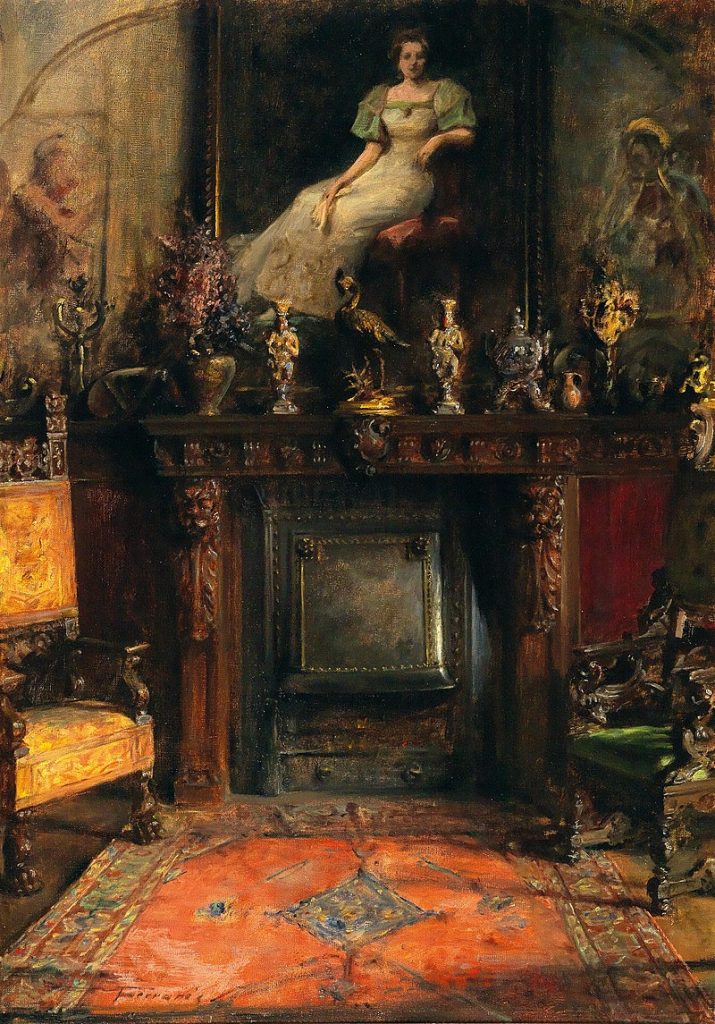
Most of the personality and style of the aristocrat will be displayed through architectural details that indicate the grandeur and wealth of the aristocrat. In general, the aristocrat’s most expensive items in his manor after his horse, armour, and magic weapons are his bed, robes, tapestries and windows. Other expensive details planned for a palace by an aristocrat and his master architect include:
Sculptures. Like the fountains found on the grounds of the manor, these sculptures may be life-size or even larger figures of deities, allegorical figures, patrons of the aristocrat and past members of the aristocrat’s family. Deacons and Industrialists may have sculptures representing past heroes of the church or founders of the guild.
Grand, monumental staircases. These huge staircases are imposing structures, and can include large steps made from marble with ivory detailing on the handrails. The sight of an aristocrat dressed in his stately robes descended from the grand staircase to make a public appearance is a powerful one. These staircases may be straight or curved, such as a double-staircase with two huge curving staircases, one on each side of the room. Spiral staircases may also be created that are just as elaborate in design.
Ornamental fireplaces. These usually come with double-hearths and are also richly decorated with sculptures. The mantle may display important treasures of the aristocrat. Above the mantle is usually a display of the aristocrat’s personal arms and symbol or paintings of the lord and lady of the manor.
Immense decorated windows. Glass is very expensive and most windows will simply be open to the outside with shutters made of wood. As a display of wealth the aristocrat may include windows decorated with stained glass featuring religious or historical scenes.
Frescoes and other artwork. Frescoes are paintings created upon wet plaster and can be made upon both the walls and ceilings. The aristocrat will want to hire the most impressive master painter he can afford to create these impressive displays of wealth and artistic taste. A palace with decorated walls and ceilings is an impressive sight that helps solidify the aristocrat’s standing among the rest of the aristocracy.
Tribunal. This large, permanent dais with stone steps that lead up to it is built within the Great Hall. A special ‘high table’ is placed upon the tribunal so that the lord of the manor sites above the rest of the public while dining.
‘Line of Kings’. This is usually a hallway dedicated to the ego of the aristocrat and built as an homage to his noble ancestors. It may also display the patrons of the church or the founders of a guild of university. The ‘Line of Kings’ is a series of life-sized statues or full-length portraits of the aristocrat’s ancestors, shown in all their glory atop magnificent warhorses and bearing elaborately engraved armour and weapons. The details can change depending upon the type of aristocrat you are playing; the main thing to remember is that the ‘Line of Kings’ is one of the greatest compliments you can pay to those who came before you. One day, a statue or portrait of you will be placed in this grand hall.
Other Functions of the Manor House
Besides providing a space for living quarters and rooms for holding both public and private councils, the palace also includes other specialized rooms and areas. Not every palace will have these specialized rooms; cultural, racial, religious and personal differences will often determine which of these areas are appropriate for your manor house.
Family Tomb. Family tombs are common within aristocratic manor houses. Large crypts are decorated with the arms and heraldry of the aristocrat’s ancestors, and many paintings and statues can be found inside. Ancestors noted for particularly exemplary service, such as serving as the head general during a past war, are given special treatment by having very elaborate mausoleums constructed for them, many of which look like miniature temples. Manor houses of aristocrats dedicated to a particular religion, guild, or university will also have tombs that house the patrons and founders of the organization.
Grand Treasury. Very common in aristocratic manor houses is a treasury where the aristocrat’s important jewels are kept, along with a storehouse of important official documents such as treaties, court documents and tax information. Very large palaces may even include a separate mint in the grand treasury for making copper, silver, or gold coins stamped with the image of the aristocrat. Sovereigns and emperors often house ‘The Royal Jewels’ in their manor houses in special guarded rooms, only bringing them out for very important public occasions such as coronations or royal weddings. Although most manor houses are not typically designed with a strong defensive value in mind, the Grand Treasury will be one of the more guarded rooms, along with the aristocrat’s bedchamber.
Harem
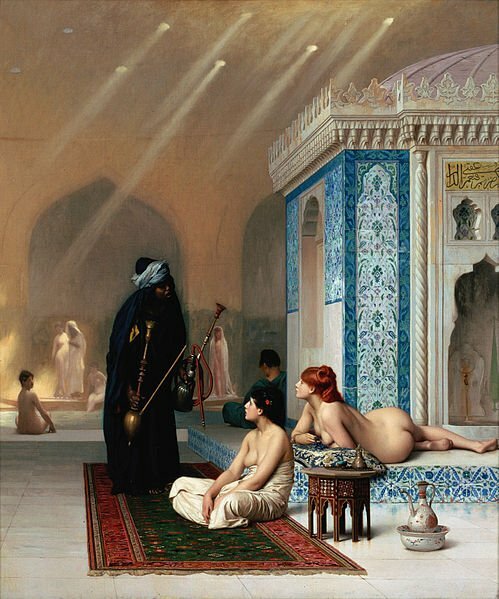
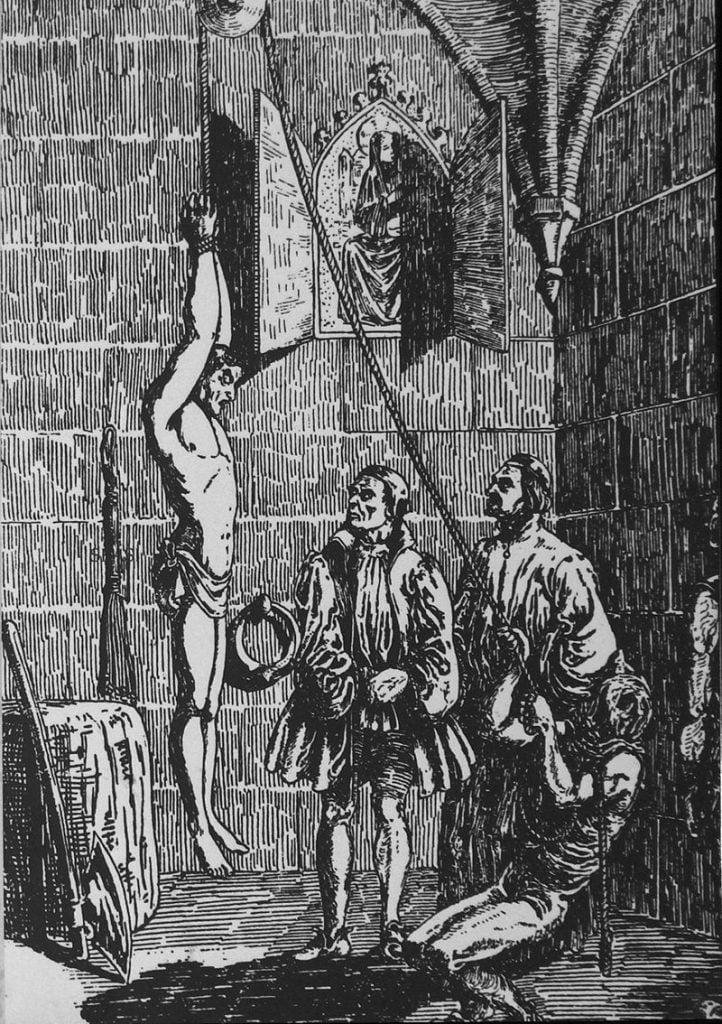
Harem. In certain cultures it is acceptable and even expected that an aristocrat will have a harem of dozens of concubines and wives. The ‘Chief Wife’ will have her own quarters as indicated above under ‘Interior Rooms’. Other wives and concubines live in the harem. A harem basically secludes the occupants away from the rest of the household. In some cultures it is a symbol of prestige and prosperity, and also sets apart the occupants as part of the upper class and not mere peasants. Eunuchs or female warriors typically guard the harems within an aristocratic manor house. While traditionally the harem system was male dominated with female inhabitants, the genders may be reversed in your campaign. A harem can be designated as one of the palace’s rooms during the initial construction phase at no additional
cost.
Kennels. Many aristocrats enjoy the company of their hunting, war and guard dogs and have their master architects design exclusive spaces for them inside the manor house. While some aristocrats prefer to let their dogs roam free throughout the palace, most care to have separate areas set-aside for their animal handlers to feed and care for these animal companions. Given the vast array of magical beasts found in a fantasy campaign, kennels may also be designed for more exotic animals such as blink dogs.
Torture Chamber. An unseemly but often too common feature in an aristocratic manor house is a special room set aside for torturing victims who are accused of crimes against the aristocrat, such as treason. Obviously these rooms will only be included in the palaces of aristocrats with an evil alignment.
Daily Life At Court
An aristocrat’s daily life at court is filled with many ceremonies and rituals. If not carefully monitored, these ceremonies can be quite a drain on the aristocrat’s time. As head of the manor, many people will wish to see the aristocrat and curry favour with him by offering gifts. Others will want favours or seek the aristocrat’s administration of justice for a perceived grievance. At all times, strict etiquette is observed and characters with low Diplomacy scores will find that they are ignored, ridiculed or even escorted from the court. Nearly every minute of the aristocrat’s day can become filled with ceremonies, even for such mundane tasks as waking up, morning prayers and breakfast. The more powerful the aristocrat is, the more increasingly rigid and ostentatious these ceremonies become. The aristocrat’s chief steward or another member of his household is responsible for maintaining a strict schedule, making sure that the lord of the manor has time to meet with the public as well as to meet privately with his advisors. He will also need to entertain other high-ranking members of his government as well as delegations of foreign dignitaries, which can result in the creation of important international treaties. A good steward will also make sure to build in time for the aristocrat to have a few minutes of secluded private time in his study or library in the afternoon for rest and relaxation.
As the head of the manor, the aristocrat will be expected to offer the comforts of his palace to royalty as well as to other members of the aristocracy such as diplomats, politicians, military heroes, scientists and explorers. The aristocrat should offer his best accommodations, along with food, drink and entertainment.
Inside the manor house, popular entertainment consists of puppet shows, music performed by troubadours, Acrobatics and even magic tricks of prestidigitation. Games of cards, dice and strategy are also very popular among the aristocracy (see ‘Tools of the Trade’). Outdoors, entertainment may consist of hunting, tournaments, bearbaiting (wagering on dogs that fight a chained-up bear), cockfighting, dancing dogs and falconry.
In return for his hospitality, the aristocrat can usually expect to receive gifts from his important visitors. Royalty may bestow important titles of nobility upon the aristocrat, while other members of the aristocracy may offer gifts of armaments or even artillery (if the campaign utilizes such weapons). Merchant princes will bring luxurious velvet and cloths made of gold as well as beautiful exotic art objects from far away lands. Jewels, gems and gold are always considered appropriate gifts as well.
The aristocratic manor is also used for important celebrations such as births and marriages. These special occasions are always the cause for magnificent feasts and entertainment, and to be invited to witness one of these festivities is to be recognized as an important member of the aristocrat’s court. Deaths are also part of court life, and as members of the aristocrat’s family learn that they are nearing the end of their earthly days, they will try to return to the manor house to die among friends and family. These solemn occasions are usually followed by a burial in the family tomb and a special ceremony to promote another family member to the now vacant position.
Income from the Manor
It costs an extraordinary amount of money to build and maintain a manor. Some of these costs can be recouped by the collection of taxes from the people who live on the manor’s lands. As expenses increase, a bewildering array of taxes may be assessed upon the manor’s inhabitants as noted below. The aristocrat will need to assign an excise official to collect these taxes from the local populace; this person is certain to be the most unpopular figure on the manor.
- Agistment. This is a tax upon the peasant for the right to graze their animals in the lord’s forest.
- Bodel silver. This is a tax for the right to live in a house on the lord’s manor.
- Chiminage. This tax is for the right to carry goods through the aristocrat’s forest.
- Foddercorn. This is a tax of grain that is provided to feed the aristocrat’s horses or other special mounts.
- Heriot. This is a very odd tax. When a person dies, his or her best animal is given to the aristocrat of the manor.
- Wood-penny Tax. This tax is assigned to peasants for collecting firewood on the aristocrat’s lands.
Maintenance Costs
The monthly maintenance of a manor can be staggering – the aristocrat must pay 10% of the manor’s value (including servants and staff) per month to keep his manor in proper working condition. These costs cover the daily operations of the manor as well as to help maintain the grounds, gardens, fountains, stables, and other important amenities upon the manor. These high costs are one of the main reasons that an aristocrat may go adventuring, seeking treasures to help replenish his stores of coin to maintain his property.
An aristocrat who does not pay the monthly maintenance fees risks watching his manor fall into disrepair. The grounds may dry up, fields will lie fallow, and plants and trees will wither and die. The palace itself may catch fire or simply collapse, or disease may run rampant through the manor killing animals or even people. These events will happen slowly over time, but they are guaranteed to happen if the aristocrat does not immediately begin paying the maintenance costs again. After three months of not paying the maintenance costs, the aristocrat will risk a peasant uprising and may be forced to flee his own lands or risk being killed for his rampant disregard for the welfare of his estate and its inhabitants.
Cost of the Manor
The costs for building the manor house itself can be found in the SRD. More defensive, military structures may be constructed using the rules for strongholds. Aristocrats who are affiliated with the particular church, guild, or academic institution may also want to consult additional construction rules .
The types of manor houses most appropriate for aristocrat characters from the SRD are as follows:
Grand House: This structure costs 5,000 gold pieces and consists of 2 to 3 stories made of wood with a thatched roof. It contains between 4 to 10 rooms depending upon the layout. This structure is only appropriate for the very lowest level aristocrats, such as non-hereditary titles like knights or minor government officials. In order to compete with the rest of the aristocracy, the character must upgrade to a larger structure as soon as possible.
Mansion: Most aristocratic palaces will be constructed based upon this model. The mansion from Core Rulebook II is made of wood and brick with a slate roof and has 2 to 3 stories housing 10-20 rooms. Its base cost is 100,000 gold pieces. Of course, aristocratic characters will seek to upgrade their mansion to include better building materials such as imported woods and stone, marble, ivory, and even silver, gold or platinum plating. These additions will raise the costs by as much as 100% but should seriously be considered an important investment for the aristocrat.
Keep: This structure is designed more for military and defensive purposes than for luxury and refinement. However, a keep (base cost of 150,000 gold pieces) can be augmented as described above under ‘Mansion’ for similar costs increases.
Other costs: The table below outlines the additional costs for some of the augmentations described in this chapter. Keep in mind that while these additions can be very expensive, the manor and palace is an extension of the aristocrat’s power and authority and every self respecting aristocrat will seek to add as many of these augmentations as possible to his manor house and the surrounding grounds.
| Design Element | Cost |
| Formal Gardens, Small | 1,500 gp |
| Formal Gardens, Large | 3,000 gp |
| Formal Gardens, Elaborate | 5,000 gp |
| Fountain | 500 gp |
| Ornamental Pond | 1,500 gp |
| Vineyards | 3,000 gp |
| Exotic Menagerie | 10,000 gp |
| Stables, Extravagant | 8,000 gp |
| Stables, Exotic | 2,500 gp |
| Hidden Courtyard | 1,500 gp |
| External Decorations (grand steps, guardian stautes, climbing ivy, flags and pennants, etc.) | +15% of structure cost |
| Sculptures, Masterpiece (Interior) | 500 gp (each) |
| Monumental Grand Staircase (Interior) | 1,500 gp |
| Ornamental Fireplace | 1,000 gp |
| Decorative Windows | 500 gp |
| Frescoes, Paintings and Artwork | +10% of sturcture cost |
| Tribunal in the Great Hall | 250 gp |
| ‘Line of Kings’ statue hall | 2,000 gp |
| Family Tomb | 1,000 gp (does not include additional statuery) |
| Grand Treasury | 2,000 gp |
| Kennels | 500 gp |
| Torture Chamber | 2,500 gp (includes equipment) |
Costs and Building Times. The manor house and surrounding grounds take one week to construct for every 2,000 spent. This time can be reduced to one week for every 5,000 gold pieces spent by increasing all costs by 50%.
Additional Costs And Status
The added cost to upgrade a mere mansion to a stately and refined residence worthy of an aristocrat does have an in-game benefit. For each additional 20,000 gold pieces spent on these artistic augmentations (not including the cost of the structure itself),the aristocrat may add +1 to his Status score.

 Buy me a coffee
Buy me a coffee